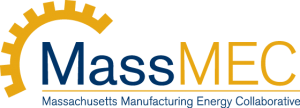
Save together. Learn More
The cheapest energy is the energy you don’t use.
Energy Efficiency
Commercial businesses can implement a range of energy efficiency measures to reduce their energy consumption, save money on energy bills, and contribute to the reduction of greenhouse gas emissions. One of the most effective measures is to install high-efficiency lighting systems that use less energy and last longer than traditional bulbs. Lighting upgrades can save businesses up to 75% on lighting-related energy costs.
Another significant energy efficiency measure is to install energy-efficient HVAC systems including heat pumps, which use less energy and can significantly reduce heating and cooling costs. Building automation systems (BAS) can help manage heating, ventilation, and air conditioning systems efficiently, ensuring they are only in operation when necessary. Regular maintenance of HVAC systems and equipment also ensures optimal performance and reduces energy waste.
Additionally, commercial buildings can benefit from insulation upgrades and sealing air leaks, which can help reduce the amount of energy required to maintain a comfortable temperature. Conducting regular energy audits can also help identify areas for improvement. Educating employees on energy-saving practices, such as turning off lights and equipment when not in use, can also help reduce energy waste and improve energy efficiency within the workplace.
MassMEC can help your business identify efficiency upgrades that leverage available incentives. Ask us for information about scheduling a no-cost energy audit.
PACE Financing for Energy Improvements
Financing efficiency upgrades, onsite generation like solar, and other energy improvements can be made even more financially compelling when financed using the Property Assessed Clean Energy (PACE) program.
PACE is an innovative program to help commercial and industrial property owners in Massachusetts finance energy improvements, administered by our friends at MassDevelopment.
The program lets you agree to a betterment assessment and lien on your property, sufficient to repay the financing extended by a private capital provider. If the property is sold before the financing has been repaid, the assessment stays and is transferred to subsequent property owners. PACE enables owners to use energy savings to undertake more comprehensive energy upgrades with financing terms of up to 20 years.
MassMEC can connect you with the resources you need to pursue PACE financing. You can also find more information about PACE here.